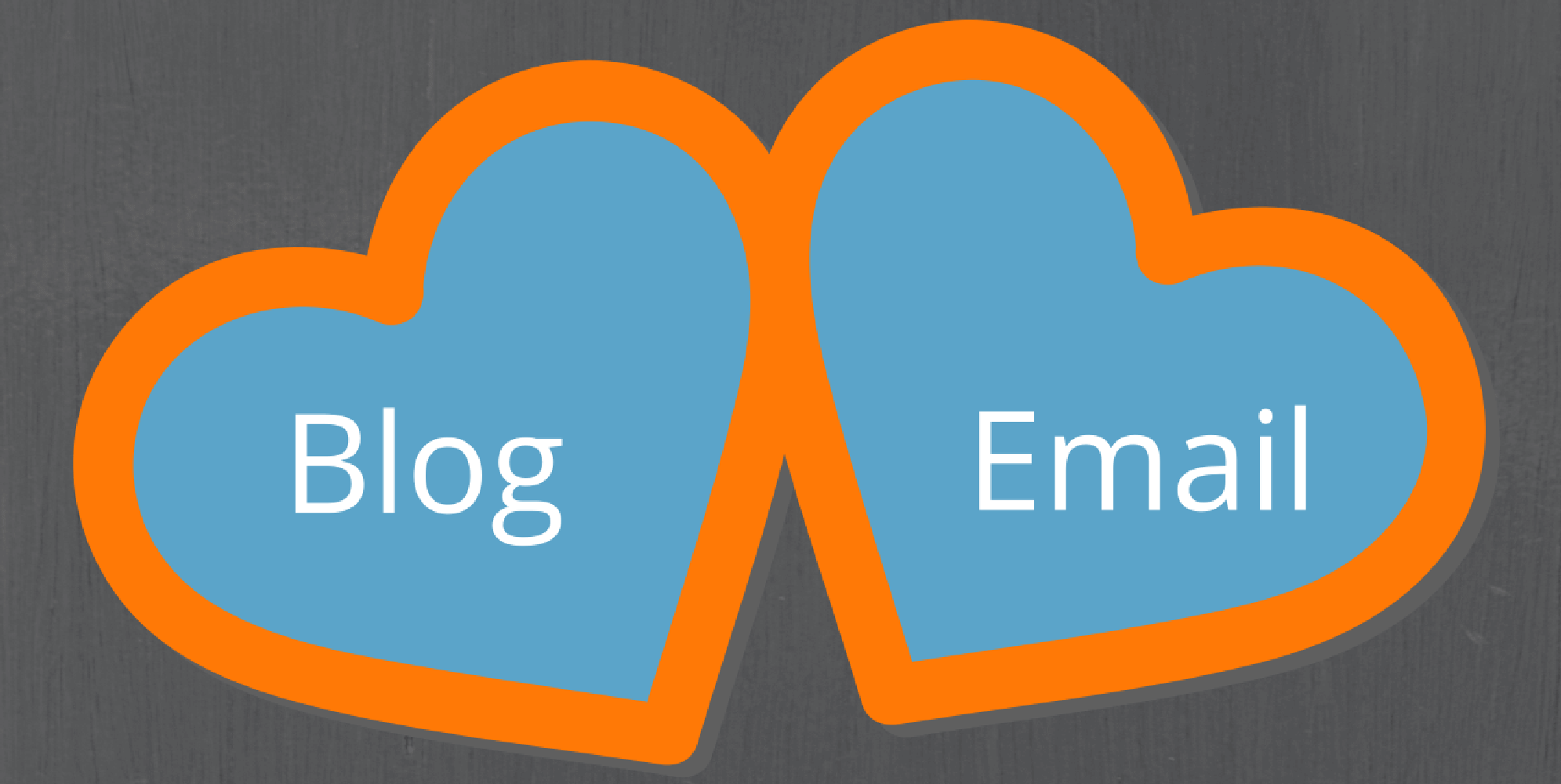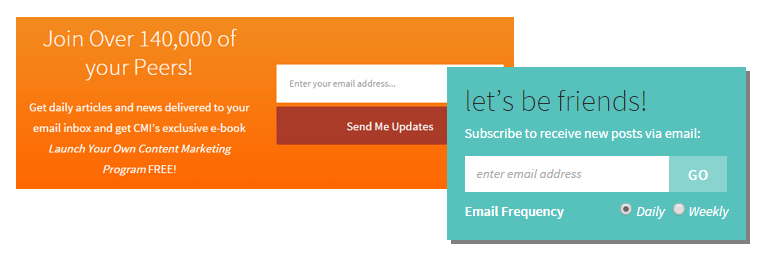Blog & Email Goes Together Like…
 Peas & Carrots
Peas & Carrots
The love story that is email and blog marketing is a long one, so let’s start from the beginning.
What is an email subscription?
An email subscription, in regards to a blog, is the ability for a person to opt-in and receive your brand’s posts in their email inbox. In other words, they’re giving you permission to send posts; they want to read more.
It’s the ultimate compliment.
Why have an email subscription option?
People are busy and distracted. It’s not uncommon for even your biggest fans to take a hiatus from your site. When you provide users the opportunity to subscribe to your blog, you have a method of reaching out during periods of absence to say, “Hey come back. I have something new, and you’re going to like it.”
Bringing readers back to your site is invaluable for numerous reasons, including:
- Consistent brand interaction
- Increased engagement
- Increased trust
- Increased social shares
- Better customer understanding
- Testing of new products/services
- Introduction of new products/services
- Company announcements
Plus, email conversion rates are 3x higher than social media. What?!
What about social?
While content channels like Facebook, Twitter, and LinkedIn are fantastic for content discovery, you don’t own them. If Facebook and other social platforms ceased to exist, how would your blog fare?
It’s dangerous to rely on someone else’s audience and tools to bring people to your blog. Besides direct traffic, email is the only channel that you can fully control. Having this direct link to your audience will save you when Facebook inevitably changes their algorithms in your disfavor.
How to get people to sign up
Okay, now that we’ve established why email is important in your blogging strategy, we hit the next hurdle: how to convince readers to actually sign up.
First thing is first. Have great content.
Your first step should be producing that people look forward to reading.
When you feature quality posts that are engaging and unique, readers are already going to be interested in reading more. They’ll look at the most recent posts, dive deeper into a category, and eventually crave content as it is created.
Secondly, you need a solid system to capture readers’ email addresses. In a CMS like WordPress, there are a number of plugins that can connect your email service with your blog. When readers enter their information in WordPress, it will sync and send it over to your list. There it stays until you decide to send them an email.
And lastly, be sure to clarify that people are signing up to receive your content in their inbox. Make it overly obvious that these are posts they’re receiving, not promotions
How often should you send out emails?
The answer to this question may directly correlate to how often you’re blogging. If you’re a small brand, your blogging and email pace will be slow. If you’re a major brand, you may benefit from daily posts and emails.
Whatever cadence you choose, be sure to test and monitor opt-out rates.
Watching these opt-out rates can help you decide whether you’re sending too many emails or not enough. Letting the customers choose the cadence is also a great way to gauge their craving for emails.
What Email Services do we Like?
There are quite a few email marketing software tools out there.
They all have different features and strengths, but generally speaking, when it comes to blogging we typically recommend WordPress and when it comes to email marketing, we typically recommend MailChimp. MailChimp is free for up to 2,000 subscribers, and a monthly fee after that. Other email services we love are Emma and Constant Contact.
Okay, you’re all set up with a solid blogging program and flashy email system that is collecting data, but now you need to use your power for good.
Blog & Offers Lists are Not the Same
You will have more than one email list.
When readers sign up for posts, they are expecting posts. Hitting readers with unwanted ads and offers will encourage them to unsubscribe and lose faith in your brand. You may have multiple lists, including weekly posts, daily posts, offers, company newsletters, but salesy emails should be kept mostly separate.
Now, you may be asking, “what’s the value in sending out posts via email if you’re not allowed to sell?”
Great question.
How to Achieve Positive ROI on Email Marketing
While hitting up your blog subscribers with sales and product announcements shouldn’t be the norm, it doesn’t mean that a tactful, well-timed offer is forbidden.
Expanding your list of subscribers creates a community that, after some time, will support you and your brand. These readers have subscribed, read posts, and shared and recommended your blog to friends. They trust and like you.
Developing this relationship is the true value. After you have this strong relationship, you can occasionally slip in an offer that you think will benefit them.
If the offer provides value at a fair price, these blog subscribers can quickly become some of your best customers.
What’s important is maintaining a balance. Offers should be less than 10% of all emails. So that means if you send out monthly emails, you should wait almost a year before hitting up your readers with an offer.
Your Blog’s Email Marketing Checklist
Now that you’re all learned up on blog and email’s important relationship, you need to implement. Here’s a quick list to make sure you’re checking all your boxes:
- Start blogging consistently
- Set up an email software tool
- Install a visually stunning email capture
- Start collecting email addresses
- Follow an email marketing schedule
- Continue this for weeks, months, years
- Monitor opt-out rates
- If appropriate, slip in an offer
- Blog more
- Email more
- Grow your email list exponentially
- Die of happiness
There you have it. Email and blog go together like peas & carrots, mac & cheese, PB &J.
This is making me hungry…
Interested in learning more about blog email marketing? Here are some articles we like:
- What Is A Double Opt-In Email List And Why Is It Important?
- How to Create an Effective Welcome Series
- Best Practices for Email Subject Lines
- Best Practices to Design Emails
For help creating engaging content, contact Volume Nine.



